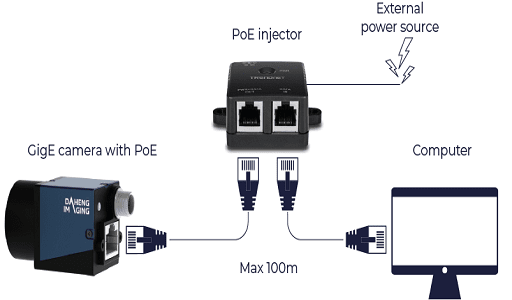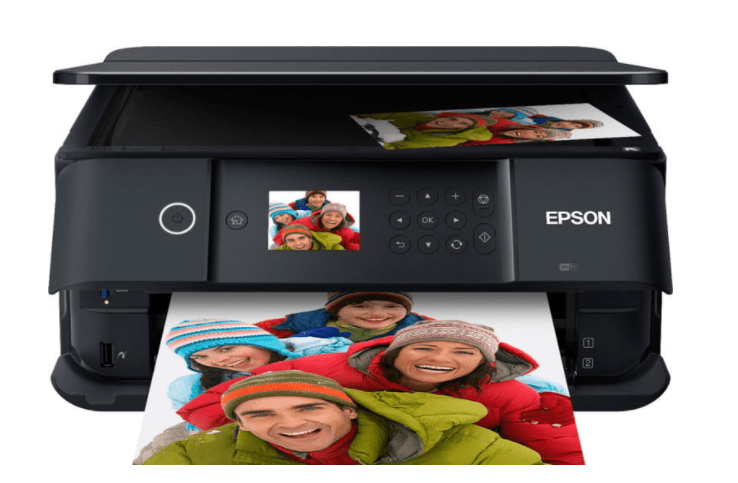In addition to transmitting data, electric devices can now receive power through a twisted-pair Ethernet connection thanks to a technique known as Power over Ethernet (PoE). This is something that can be seen in the Internet of Things (IoT) devices very frequently, such as IP security cameras, and it substantially simplifies the wiring of any such setup because it means that just one cable is required for nearly everything. When such devices may be placed in difficult-to-reach locations, where running any cabling would be a hassle, this solution is not only more cost-effective but also quite convenient.
However, that is not the only feature that contributes to PoE’s overall usefulness. Everything you need to know about Power over Ethernet is included in this article.

What is Power over Ethernet?
Power over Ethernet is the name given to the overall technology that makes it possible to transmit data as well as power over an Ethernet network connection. This technology is also known as “power over ethernet.” In practice, Power over Ethernet (PoE) is the result of the interaction between a device that is capable of PoE, a regular Ethernet connection, and a network switch that is capable of PoE. It is also feasible to utilize a switch that does not support Power over Ethernet and to place a PoE injector between the switch and the PoE device; however, the injector will need its own connection to the main power supply in order to supply power to the network.
PoE was initially conceived for use with Voice over Internet Protocol (VoIP) phones. It enables these phones to be powered and connected to a network using a single cable, and it also provides the simple ability to remotely power off such devices when they are not in use. PoE was developed by the Power over Ethernet Alliance. Since then, it has been expanded to make the wiring of IP cameras, outdoor radios, IP TVs, network routers, access control points such as intercoms and entry card scanners, remote point-of-sale kiosks, and industrial control systems, to name just a few examples, much simpler.
Wi-Fi access points are, however, its most widespread application in the homes of the vast majority of people. This is especially frequent in mesh networks, which require a large number of routers and nodes in their architecture.
You may also like Best USB C dock: How long can a USB-C cable be?
How does Power over Ethernet work?
Copper wires twisted together in pairs are the foundation of every conceivable variety of Ethernet cable. It is those pairs that are responsible for transmitting the data, and it is those same pairs that are responsible for facilitating the transmission of power down the cable. The remaining power is sent over the Ethernet cables to any Power over Ethernet (PoE) devices that are joined to the network. This power is received in part by the power source device, which could be a PoE switch or a PoE injector.
There are three different methods that have been established for sending electricity over Ethernet. Alternative A, also known as Mode A, Alternative B, sometimes known as Mode B, and 4PPoE are their respective names. Power over Ethernet (PoE) configurations using Alternative A send data and power over the same wires (for speeds of 10 Mbps and 100 Mbps), whereas PoE configurations using Alternative B send power over cables that are physically separate from the data lines. When transmitting power and data, the 4PPoE standard makes advantage of all four pairs of a twisted-pair wiring configuration. This makes it possible to offer more electricity and increase network speeds.
What kind of Ethernet cables support the PoE standard?
To utilize PoE, you do not require any kind of specialized wiring; however, you will need to select an Ethernet cable of a quality high enough so that both the power and data can be transmitted without any interference. Even though the performance and quality of Ethernet cables can vary dramatically depending on which Ethernet cable you choose, the most recent categories of cables have a minimum quality threshold that guarantees you’ll get a reliable PoE connection. This is the case even though the performance and quality of Ethernet cables can vary dramatically. Keeping this in mind, the minimum cable category that should be used for Power over Ethernet should be Category 5 (or Cat 5) Ethernet cables. More recent generations of cables are utilized for Gigabit Ethernet with PoE or greater bandwidth connections.
This proposal comes with one important proviso, which is that the cable in question must be constructed using wiring made entirely of copper. Copper-Clad Aluminum (abbreviated to CCA) cables are one type of more cost-effective Ethernet cable. These cables take an aluminum wire and coat it with a very thin layer of copper. Because aluminum is a poor electrical conductor compared to copper, it is advised that CCA Ethernet cables not be used for Power over Ethernet (PoE) networking, regardless of the bandwidth that is requested.
How much power does Power over Ethernet provide?
PoE may give quite a lot of power if necessary, making it possible to use some more demanding PoE devices. However, in most cases, it only delivers a very moderate level of power, which is sufficient for modestly powered connected devices. The foundational Power over Ethernet specification allows for up to 15.4 watts of direct current (DC) power to be supplied on each port; however, this maximum is typically reduced to 12.95W at the device due to the fact that some power is lost along the length of the cable, and this loss is magnified with longer cables.
More modern specifications can offer 25.5W, 51W, or even 71W per port, with each requiring more from the power sourcing equipment, which could be a switch equipped with Power over Ethernet (PoE) or a PoE injection device.
You may also like The Best HDMI Cables for 2023
How long can cables that use PoE be?
There are length restrictions on cables, despite the fact that Power over Ethernet does not require any specialized wiring in order to function properly. Various Ethernet cable lengths support a range of data transfer rates, but the maximum distance that Power over Ethernet can travel is 100 meters. On the other hand, even though the maximum length of each Ethernet cable in a PoE network is 100 meters, you can extend the power-delivery mechanism by making use of PoE extenders. You place them on the line between the equipment that provides the power source and the device that is networked. This gives you the option of adding an additional 100 meters of Ethernet wire to the network.
PoE extenders are not injectors, therefore they do not need their own power connection, but they do ensure that power is maintained throughout the network. Injectors are required to have their own power connection. However, they are not capable of completely replicating the power coming from the primary source, as the extender itself will need some power in order to function. This results in a lower amount of power being delivered to the device that will eventually serve as the endpoint than there would be if it were simply attached directly to the device that serves as the power source over a shorter cable run.
Keeping this in mind, it is possible to use multiple PoE extenders along the length of the network in order to further extend the network’s reach; however, because each extender consumes more power, there is less power available for the PoE device in the end. If you use an extension splitter, which distributes the Power over Ethernet connection to a number of different endpoint devices, this problem will become even more severe.
Would you like to read more about Power over Ethernet-related articles? If so, we invite you to take a look at our other tech topics before you leave!










